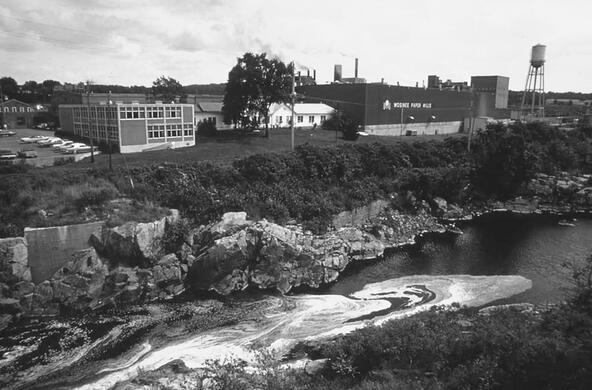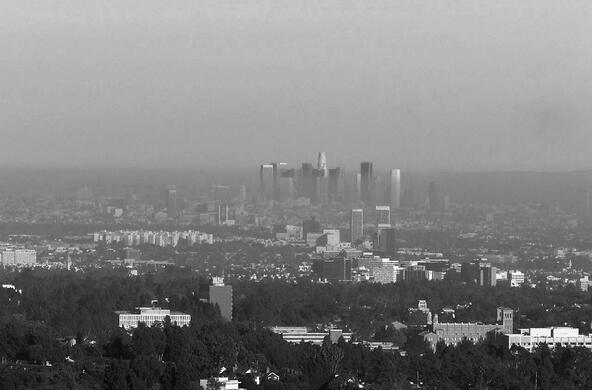As we hear pressures to roll back some of the provisions that ensure clean air, largely in pursuit of unfettered economic activity, it is worth spending a little time reflecting on the benefits of clean air to human health. A long list of gases that exacerbate asthma, emphysema, and COP, such as ozone and nitric oxide, are known irritants and oxidizers of lung tissue. The Clean Air Act was meant to clean up a number of these pollutants, especially those emitted from coal-fired power plants.
A burgeoning medical literature also links the presence of fine particles in the atmosphere to increased human mortality, largely from heart attack and stroke. These particles are known as PM2.5 if they are less than 2.5 microns in diameter, and PM10 if they are less than 10 microns in diameter. For PM2.5 in particular, the particles can lodge deep in our lungs, and their contents can be absorbed into the bloodstream. Many particles from coal-fired power plants carry toxic metals and carcinogens.
A recent review suggested an annual worldwide premature mortality of nearly 3 million people from particulate air pollution. Obviously, the sources and impacts of particulate pollution vary regionally, and it is difficult to design experimental work on air pollution and human mortality. Particulates are often associated with other air pollutants, making cause-and-effect conclusions suspect. Many of these particles are not emitted directly, but form in the atmosphere from reactions between air-pollutant gases, such as ammonia.
Now, a recent, inadvertent study in China makes a stronger case. In the 1950s, China subsidized the use of coal for heating in cities north of the Huai River, but not those to the south. Subsequent levels of PM10 and cardiorespiratory mortality strongly reflected this division. Levels of PM10 were 42 ug/m3 (46%) higher north of the river, and human life-span was reduced by an average of 3.1 years, largely through increased occurrence of cardiovascular disease. For studies in Beijing, where PM2.5 exceeded 115 ug/m3 for more than 6 days, the excess risk of mortality (mortality above expected levels) was about 40%.
It is worrisome that in the U.S. more than 6 million tons of PM2.5 are emitted each year, increasing about 1% per year. Each 10 ug/m3 increase in PM2.5 is estimated to cause a 1 per cent increase in mortality in exposed populations.
These studies in China and the U.S. reinforce the understanding that clean air makes a difference to each of us. A switch from coal-fired power plants to natural gas or (ideally) solar would reduce particulate air pollution. One estimate suggests that a switch to solar would potentially save $167 billion in health care costs associated with air pollution each year.
References
Di, Q. and 7 others. 2017. Air pollution and mortality in the Medicare population. New England Journal of Medicine 376: 2513-2522.
Ebenstein, A., M. Fan, M. Greenstone, G. He and M. Zhou. 2017. New evidence on the impact of sustained exposure to air pollution on life expectancy from China's Huai River Policy. Proceedings of the National Academy of Sciences 114: doi: 10.1073/pnas.1616784114
Kioumourtzoglou, M.A. and 4 others. 2016. PM2.5 and mortality in 207 US cities: modifiection by temperature and city characteristics. Epidemiology 27: 221-227.
Paulot, F. and D.J. Jacobs. 2014. Hidden cost of U.S. Agricultural exports: Particulate matter from ammonia emissions. Environmental Science and Technology doi: 10.1021/es4034793
Shi, L.H. and 6 others. 2016. Low-concentration PM2.5 and mortality: Estimating acute and chronic effects in a population-based study. Environmental Health Perspectives 124: 46-52.
Wang, J and 5 others. 2017. Prolonged continuous exposure to high fine particulate matter associated with cardiovascular and respiratory disease mortality in Beijing, China. Atmospheric Environment 168: 1-7.
Wiser, R. and 8 others. 2016. The environmental and public health benefits of achieving high penetrations of solar energy in the United States. Energy 113: 472-486.






